The 25 Best UPN, WB and CW TV Shows of All Time
Header photo: Warner Bros.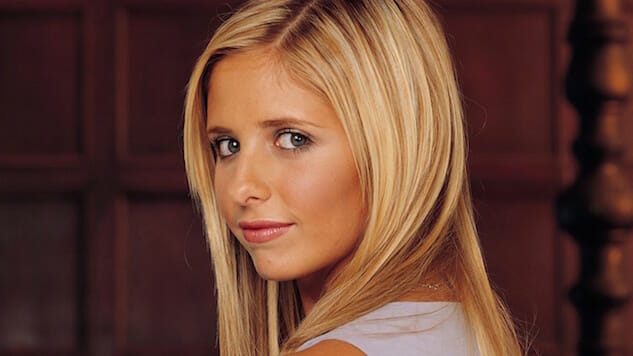
By its very nature, our list of the 25 best TV shows on what’s now The CW is more complicated than our ranking of the best TV shows on FOX—after all, The CW itself has a complicated identity, the product of a sometimes uneasy marriage of UPN and The WB in 2006. For this list, selected by polling Paste staff and TV contributors, any series that originated on one of those three networks qualified, plus one exception: Sister, Sister, which was dropped by ABC and picked up by The WB so soon after its debut that we thought the latter deserved the credit.
As is always the case with rankings like these, a few of our personal favorites missed the cut: Feel free to tell our TV editor he swung and missed, but in the meantime, let’s call Moesha, The Flash, Roswell and Riverdale honorable mentions. What comes through regardless is UPN and The WB’s youthful, often inclusive DNA, which The CW, with titles like Jane the Virgin and Crazy Ex-Girlfriend, has continue to push in novel directions. Audiences regularly underserved by the Big Three networks—most obviously teens and fans of genre fare—have found a home at The CW and its ancestors for going on 25 years, and this list, above all else, is our way of saying thanks for that.
25. Charmed
Network: The WB
Original Run: 1998-2006
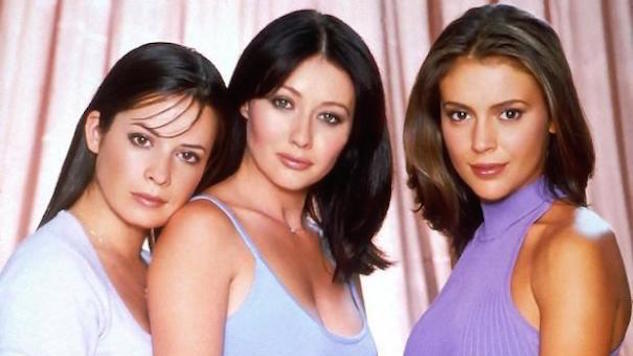
The recent news that the CW was rebooting Charmed and promising a feminist angle understandably upset original stars Shannen Doherty and Holly Marie Combs. Because the story of Piper (Combs), Phoebe (Alyssan Milano) and Prue (Doherty), three sister who discover they are the Charmed Ones and use their Power of Three to battle the forces of evilalways had a feminist angle. The Halliwell sisters didn’t need men to fight their battles they used their brains and their witchcraft to fight off demons and all sorts of nefarious sorces. And lest we remind you that the drama is one of the longest running ones with all female leads. The series underwent a major cast change when Doherty departed (as she does) at the end of Season Three and Rose McGowan came onboard as long lost half-sister Paige. But McGowan held her own and the series lasted for another five seasons. Premiering almost two decades ago, the show helped define the WB as the place for compelling drama aimed at young women. We were all Charmed, I’m sure. —Amy Amatangelo (Photo: CBS TV Studios)
24. Aliens in America
Network: The CW
Original Run: 2007-2008
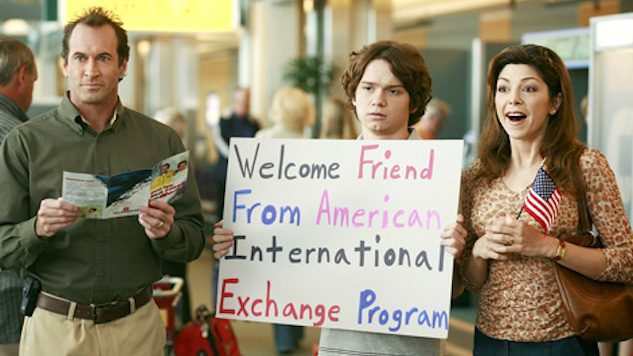
Aliens in America centers on Justin (Dan Byrd), a young teenage outcast whose angst-ridden world receives a major shake-up when his family welcomes Raja (Adhir Kalyan), an affable foreign exchange student from Pakistan. Developed at the tail end of the Bush-era, there is easily a world where this series serves as a tasteless, tone-deaf exercise in topicality. Hell, the initial trailer and promos did very little to engender good grace. That the show was cancelled after one season probably means not many people thought it deserved a chance. And that’s certainly a shame. While not without its occasional stumbles into overly broad, sitcom characterization, what’s immediately apparent about Aliens in America is the inherent sweetness and heart at its core. Much of this is due to the odd couple friendship that quickly develops between Justin and Raja, the titular “aliens” in their community. Far from being an offensive stereotype, Raja provided a positive, humanizing portrayal of a Muslim in a television landscape before diversity became a hot button issue. Today, when the Republican presidential candidate is proposing a widespread ban on Muslims and immigrants alike, Aliens in America seems more relevant and more necessary than ever before. —Mark Rozeman (Photo: The CW)
23. The Carrie Diaries
Network: The CW
Original Run: 2013-2014
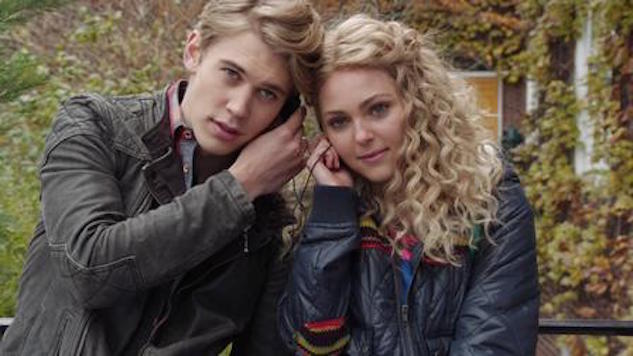
Here’s how charming and endearing the CW’s Sex and the City prequel series was—this blurb is being written by someone who rarely watched the original HBO program and, when they did, actively dismissed it as being frivolous fantasy (a person can only take so many painful puns before breaking). What helps The Carrie Diaries rise above mere cynical cash grab lies not only in its spot-on casting (AnnaSophia Robb makes for an engaging young Carrie Bradshaw), but the ways in which it conveys the wonder of moving past your bland high school life and being tossed into an “adult” world full of glamor and promise. The series opens with Carrie coping with the recent death of her mother, setting the tone for an incisive, pathos-filled character journey. In short, the narrative follows Carrie as she receives a life-changing opportunity to work in New York—first at a law firm then at a upscale entertainment magazine (with the owner unaware she’s a high school student). Carrie soon finds herself balancing this extracurricular activity with the traditional high school drama concerning boys and familial strife. Unlike Sex and the City, the show never quite found its audience and was cancelled after two seasons. —Mark Rozeman (Photo: The CW)
22. Popular
Network: The WB
Original Run: 1999-2001
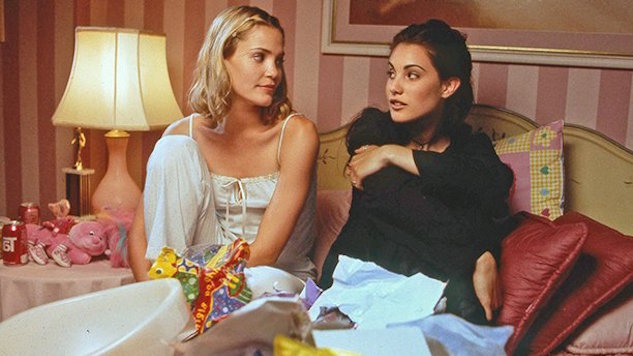
Even titans have to start somewhere. Prior to creating his own mini TV empire (Glee, Nip/Tuck, American Horror Story, Scream Queens and American Crime Story), writer, director and altogether enfant terrible Ryan Murphy made his name co-creating (with writer/producer Gina Matthews) the short-lived but well-regarded WB dramedy, Popular. The series starred Leslie Bibb and Carly Pope as teens from opposing ends of the high school popularity chart. The two find their drastically different lives crashing together when their respective parental units undergo a whirlwind engagement. Needless to say, this causes major shockwaves that extends beyond their home lives and into their friend groups. A large chunk of the first season revolves around the two effectively trying to reverse Parent Trap the relationship that brought them together. Though the series eventually softens as the girls get to know one another, the biting cynicism and rough edges that Murphy would bring to his later projects is on full display here. —Mark Rozeman (Photo: Randy Tepper/The WB)
21. Sister, Sister
Network: ABC, The WB
Original Run: 1994-1999

For the most part, Sister, Sister was a light-hearted sitcom made up of all the traditional tropes and plot devices—sibling rivalries, petty high school drama, crushes, love triangles and annoying neighbors (Go Home Roger, AKA Marques Houston). Tia and Tamera Mowry played pre-teen twin sisters who were separated at birth, but discover each other—while shopping at a mall, obviously. And while it had its broad appeal, what made the show such a gem was that it carefully wove in greater and more complicated issues of family that came about, as the two sisters had both been separately adopted. The merging of the sisters was also a merging of households and personalities, via Tamera’s father Ray (Tim Reid) and Tia’s mother Lisa (the incomparable Jackée Harry). The series followed the sisters from middle school all the way through high school, making it the kind of show you could grow up with, at least over the course of five years. And sure, it could be corny and idealistic at times, but like other shows on this list it was also entertaining and well-written. Unlike so many other shows on this list, and even most modern sitcoms and dramas, Sister, Sister centered on a fairly normal black family—one that wasn’t especially wealthy or poor; these characters didn’t own a music empire, nor did they run the streets of Baltimore. In spite of their odd beginnings, this was about a regular, schmegular black family that was still deemed worthy of our attention and a time-slot. Imagine that. —Shannon M. Houston (Photo: Courtesy of CBS Television Distribution)
20. Gossip Girl
Network: The CW
Original Run: 2007-2012

Slick, uber-wealthy and almost unbearably white, Gossip Girl was adroitly dubbed the “hockey fights video of teen romance drama” by the New York Daily News. While I tend to like my TV a little weightier and with a less blinding palette (seriously, you could set your white balance on most of this cast) I was, despite myself, quickly won over by this absurdist look at insanely wealthy New York teenagers. When the reactionary Parents Television Council referred to the show as “mind-blowingly inappropriate,” I was sold. Anything that pisses off a group of backwards tight-asses that much has got to be supported. And you know what? It was inappropriate. But so what? It was like Bugsy Malone with martinis and sex toys. Its tongue was planted firmly in cheek and the show had wit to spare. And lest you think it was all modern fluff and wastoid teens, the show did have over-arching literary pretentions that often paid off. How else do you explain episode titles like “Pret-a-Poor-J,” “You’ve Got Yale!,” “The Witches of Bushwick” and “The Treasure of Serena Madre”? Sure the “Who was Gossip Girl” reveal makes much of the five years one giant plot hole, but who cares? You know you love her… XOXO, Gossip Girl! —Mark Rabinowitz (Photo: The CW)
19. iZombie
Network: The CW
Original Run:2015-present

Buffy the Vampire Slayer meets Veronica Mars is the best way to describe this delightful drama. iZombie, from Mars creator Rob Thomas, draws on the strengths of both these iconic series while carving a distinct path for itself. Liv Moore (Rose McIver) was a promising medical student until one bad night of partying turned her into a zombie. Now she works in the morgue solving murders on the side all while keeping the true nature of her condition from her loved ones (she’s not that pale because she uses sunscreen people). As the second season progressed, more were let in on Liv’s secret and she assembled a Scooby gang of her very own while struggling to protect those that she loves. The show has a sense of humor—witness all the delectable ways Liv serves up brains. But the ghoulish and voracious zombies offer real frights and Steven Weber’s nefarious CEO Vaughn Du Clark is truly terrifying. However it’s the show’s overarching premise—that any of us could find ourselves among the undead trying to control our most basic instincts while our normal life remains just out of our grasp—that what will keep you up at night. —Amy Amatangelo (Photo: The CW)
18. The Vampire Diaries
Network: The CW
Original Run: 2009-2017
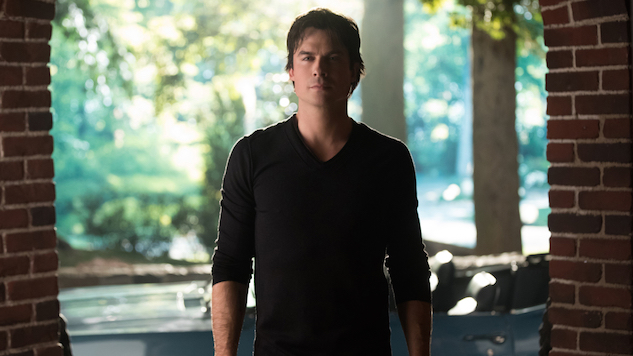
If ever a TV show moved the needle on bourbon sales, I’m guessing it was The Vampire Diaries. Vampire brothers Stefan and Damon Salvatore (Paul Wesley, Ian Somerhalder) have a seemingly endless supply of brown liquor and an impressive collection of glassware. And I’ll admit, never before has a show more inspired me to drink along with the leads. But I digress…. What began as an angst-filled teenage supernatural drama has actually developed into a compelling and frequently gruesome foray into the world of vampires (and werewolves and witches and hybrids and siphons and….) and the men and women who love them. While CW shows are often painted as skewing towards melodramatic teen/YA fare, that’s an increasingly unfair assertion and one that The Vampire Diaries did a great job of dispelling, particularly once it grew out of its early “Dawson’s Creek with vampires,” phase. Season One, while intermittently strong, was more or less, one of those shows people refer to as a guilty pleasure. It was fun, but not really good. Once creators Julie Plec and Kevin Williamson (creator of Dawson’s Creek, not a coincidence) really got a feel for where they wanted to take the show, however, it took off and over the past seven years, the show has proven to be a reliably well-acted, creepy and ethically complicated, hour of drama. The upcoming eighth season is the show’s last and I’m okay with that. It’s still strong and in the world of TV, there’s nothing worse than staying on too long. We’re going to miss the gang but it’s time and hopefully some of them will pop up in The Originals from time to time. —Mark Rabinowitz (Photo: The CW)
17. Girlfriends
Networks: UPN, The CW
Original Run: 2000-2008
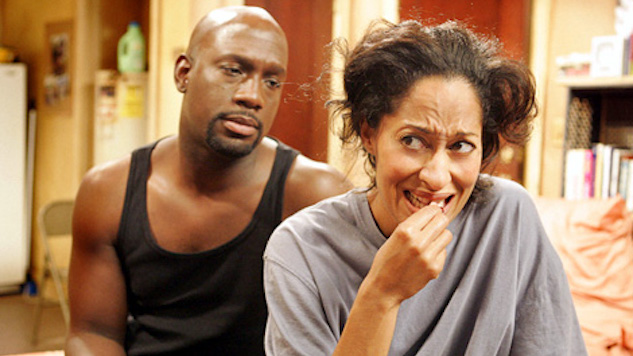
Girlfriends reigned as that divine creation that explored life, love, careers and a blossoming sisterhood among women. The show, often compared to Sex and The City, was a witty, intelligent and sexy exploration of the many facets of black womanhood through the lens of four very different women. There was Joan (lawyer and “den mother”), Toni (selfish and popular real estate agent), Maya (sassy law assistant) and Lynn (free-spirited Bohemian). During its eight-year run, Girlfriends was one of the highest-rated scripted shows among black viewers aged 18-34 and tackled an endless number of issues, including colorism, AIDS and class issues. —Ashley Terrell (Photo: The CW)
16. Smallville
Networks: The WB, The CW
Original Run: 2001-2011
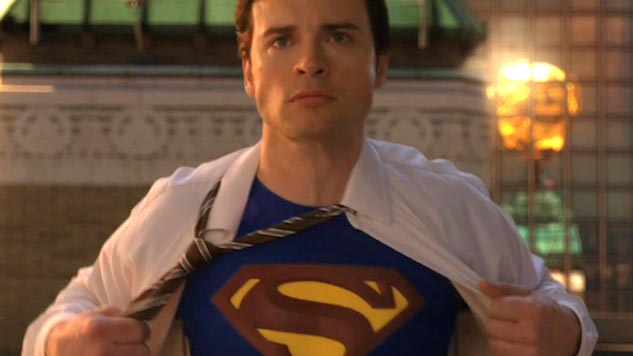
So, 15 year-old Clark Kent is played by a 24 year-old man (Tom Welling) who doesn’t wear glasses and isn’t all that mild-mannered. Assuming he eventually becomes Superman, wouldn’t his high school friends all recognize him? With that as a premise/set-up, Smallville started off with both arms tied behind its back and still managed to make it 10 years as a (mostly) quality show. This is a hell of an achievement and only 36 non-daytime soap series have lasted longer. As a series set in high school (for the first four seasons), Smallville might have benefitted either by casting the lead younger or by skipping through high school at an accelerated rate. Still, Smallville managed to bring all the necessary high-school trimmings: first love, prom, rivalries with the jocks, spirit possession, mind-control and lots and lots of murder… you know, the usual. Season Four went off the rails when Clark became the school quarterback (seriously, did no one at The WB read a comic book?) but for most of the run, I was able to deal with the non-canon moments. That said, Smallville may be one of those shows that was “of its time” insofar as television programming (especially geek TV) has improved significantly over the last 5-10 years. It’s not that it wasn’t a good show, but I’d argue that 218 episodes was far too many to get where we all knew it was going, and it prolonged Superman’s Superboy period to an absurd length. —Mark Rabinowitz (Photo: The CW)
15. Angel
Network: The WB
Original Run: 1999-2004
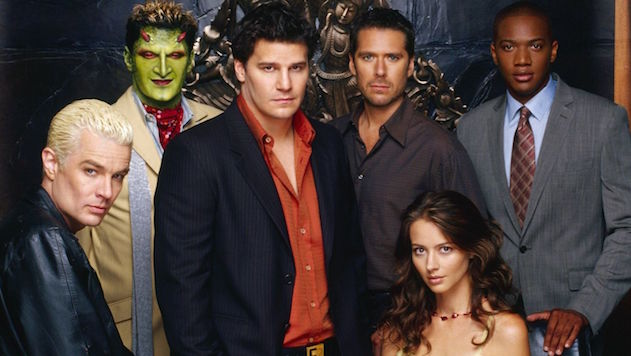
For many ’90s kids, Angel was our first time experiencing the magic and the disappointment that comes with almost every spin-off series. No, Angel wasn’t going to give us what Buffy gave, nor would Sunnydale’s savior even make regular appearances on the show, much as we wanted her to. But, yes, if you loved David Boreanaz’ brooding, tormented, redemption-seeking character, you were going to enjoy watching Angel (formerly Angelus, The Scourge of Europe) fight a whole new kind of big, bad in Los Angeles. Angel was never going to become as iconic as Buffy, but like BtVS, the series benefited from the hero’s helpers. Familiar faces (like Charisma Carpenter’s Cordelia, James Marster’s Spike and Eliza Dushku’s Faith) were necessary to she show’s appeal, and new characters like Glenn Quinn’s Doyle gave Angel its own, distinctive feel. It was a darker, more mature show (this was even reflected in that intoxicating and haunting theme music from Holly Knight and Darling Violetta), and its somewhat surprising cancellation after five seasons was a major blow to fans. Boreanaz would go on to reinvent himself on Bones, but—for many of us—he’ll always be Buffy’s true love, The One with the Angelic Face. —Shannon M. Houston (Photo: Warner Bros.)
14. Reaper
Network: The CW
Original Run: 2007-2009

Has there ever been more perfect casting than Ray Wise as the devil? I mean the man has a devilish twinkle in his eye at all times (one he’s currently using with great aplomb on Fresh Off the Boat). This too short-lived series follows Sam Oliver (Brett Harrison) who discovers on his 21st birthday that his parents promised their first born to the devil. Oops. Sam is quickly put to work as the devil’s bounty hunter. The show was a terrific mix of smart humor (the portal to hell was the local DMV), genuinely scary moments, a demon of the week to keep the story going and great overall arc of how Sam was going to get himself out of this mess and get to the bottom of the deal his parents made. Unfortunately it never quite clicked with the audience and was cancelled after two seasons. —Amy Amatangelo (Photo: The CW)
13. Supernatural
Networks: The WB, The CW
Original Run: 2005-present
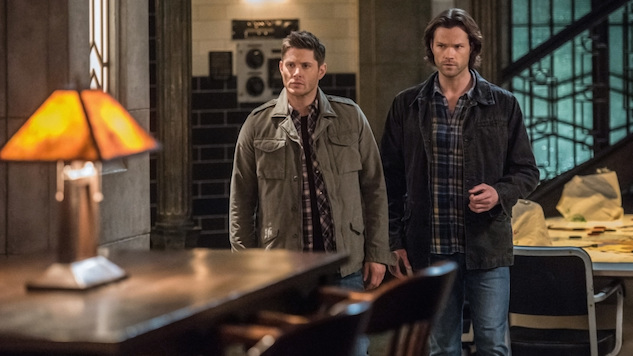
It’s no small thing for a show like Supernatural to keep on keeping on after a decade spent giving all manner of monsters the what for. Consider, as the series creeps toward its eleventh season premiere, that when The WB first aired the aberration-hunting adventures of the brothers Winchester, Dean (Jensen Ackles) and Sam (Jared Padalecki), back in 2005, the network had added a slew of new titles to its ‘05 – ‘06 schedule, including Just Legal, Twins, and Pepper Dennis, among many others.Consider as well that none of them stuck around for very long or made much of an impression. (You’re probably pulling up Wikipedia to find out what they’re each about as we speak.) But Supernatural? Supernatural endured. When the WB merged with UPN in 2006, Supernatural walked out of the Thunderdome. The “why” is obvious. Eric Kripke’s story of two brothers on a mission to protect the innocent from evil in all its sundry forms— ghosts, demons, vampires, werewolves, the occasional wendigo or djinn, zombies, you name it— maintains a terrific balancing act throughout each of its ten (to date) seasons, blending enough humor, horror, and individual personality with well-tread genre tropes and plots to make it a standout from other programs of its kind. Some episodes lean more toward “funny.” Others lean in the direction of “scary.” Others still make you laugh and quake in fear at the same time. It’s no wonder, then, that the death of The WB wasn’t enough to stop the Winchesters from doing what they do. —Andy Crump (Photo: The CW)
12. Star Trek: Voyager
Network: UPN
Original Run: 1995-2001
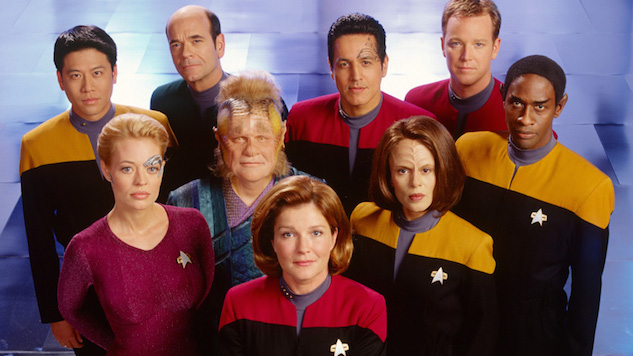
If the original Enterprise explored strange new worlds, sought out new life and new civilizations and boldly went where no man had gone before, Voyager showed what a woman could do. The unflappable Captain Kathryn Janeway (Kate Mulgrew) guided her crew home when an energy wave transported them across the Milky Way into the Delta Quadrant, home to plenty of new civilizations and dominated by Star Trek’s best adversary of all time, the Borg. Where the first two series were about exploration by a Utopian society and Deep Space Nine was a more honest look at the difficulties of simple co-existence, Voyager was all about the journey home. The crew, made up of Starfleet and Maquis rebels, were brought together out of necessity but had to rely on each other in part of the galaxy that was strange even to professional explorers of space. In addition to the usual human/Vulcan/Klingon characters, the ship was home to a local Talaxian guide, a holographic doctor who developed self-awareness, and a Borg drone separate from her hive and re-learning her humanity. With only each other to rely on, Voyager was the most interpersonal series in the Star Trek universe. The show also provided the anchor for a whole new network, launching UPN on January 16, 1995. —Josh Jackson (Photo: CBS Television Distribution)
11. The Game
Networks: The CW, BET
Original Run: 2006-2015
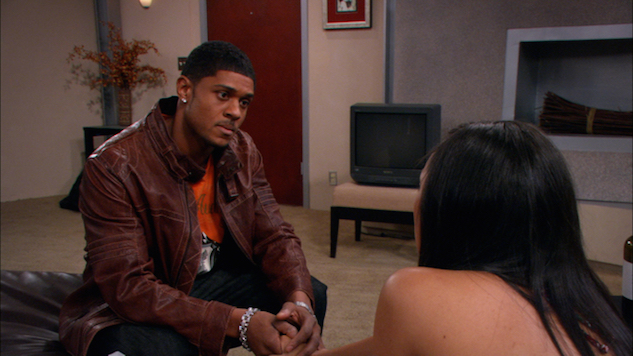
The Game is the perfect example of how, sometimes, the particular premise of a TV show doesn’t ultimately matter—it’s all about strong writing and believable, complicated characters. A series about professional football players and the women who love them may not sound especially exciting to some of us, but thanks to Mara Brock Akil (the brilliant mind responsible for Girlfriends and one of the most engaging dramas in recent years, Being Mary Jane), we were presented with a hilarious, nuanced tale that was soapy enough to be addictive, but so well-written that it was easy to forget you were watching a show, technically, centered on a bunch of rich and arrogant athletes. The Game presupposed that the women on the sidelines often had more to do with the outcome of a game than the men on the fields, and as a result a complex feminist narrative informed the three women who were initially at the center of the show. Melanie Barnett (Tia Mowry-Hardrict), Tasha Mack (the phenomenal Wendy Raquel Robinson) and Kelly Pitts (Brittany Daniel )were funny, compulsively watchable characters joined by Derwin Davis (Pooch Hall), Malik Wright (Hosea Chanchez) and Jason Pitts (Coby Bell). Melanie and Derwin would go on to have an intense, but also completely relatable romance, which made the series difficult to enjoy after the departures of Mowry and Hall at the end of Season Five (two seasons after the show’s revival on BET, following its cancellation on the CW). Although it was never quite the same, The Game would continue to deliver much of the same comedy, fantastic music, amazing guest stars and biting social commentary that made us fall in love with it in those early days. —Shannon M. Houston (Photo: CBS Television Distribution)
10. America’s Next Top Model
Networks: UPN, The CW
Original Run: 2003-2015

For the GIFs alone, ANTM deserves inclusion on this list: Even if you’ve never seen an episode, if you use Twitter (or Tumblr), you’re already familiar with the reality juggernaut. But it’s that last part that earns the deliciously entertaining modeling competition, which transformed Tyra Banks from Victoria’s Secret model to household name, a spot in our top 10. One of the network’s biggest all-time hits, eventually spawning a franchise of dozens of international versions, ANTM deserves to be considered alongside American Idol in terms of developing the vernacular of the modern talent show, from expert coaching and weekly elimination challenges (in its case, photo shoots) to the judges’ star turns. (For my money, the gleeful repartee between Banks and J. Alexander blows that of Nina Garcia and Michael Kors, or even Simon Cowell and Paula Abdul, out of the water.) Love it or leave it—and it’s had moments of both in its long lifespan—America’s Next Top Model is one of the most influential reality shows of all time. We we rooting for you, indeed. —Matt Brennan
9. Felicity
Network: The WB
Original Run: 1999-2002
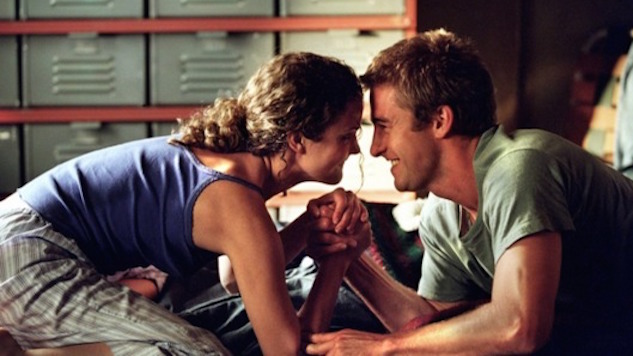
Long before Keri Russell was a covert Soviet spy, she was college student Felicity Porter who traveled across the country for a boy. The boy was Ben Covington (Scott Speedman) and with his lackadaisical smile and dreamy eyes, you really couldn’t blame her. The series posited the question fans are still wrestling with—the elusive Ben or nice guy Noel (Scott Foley) while dealing with the college experience of weird roommates, parents who don’t understand your choices, midterm stress and balancing a part-time job with your studies (although no one has ever had a boss as wonderful as Javier so delightfully played by Ian Gomez). When Felicity cut her luxurious locks at the start of Season Two, it was the haircut heard ‘round the world. The series was not only a defining one for the nascent WB network but also for executive producer J.J. Abrams, who went on to create Alias with the pitch “What if Felicity were a spy?” (Oh and for the record I’m totally #TeamBen). —Amy Amatangelo (Photo: Touchstone Television)
8. Everwood
Network: The WB
Original Run: 2002-2006

When Dr. Andy Brown (Treat Williams) moved his teenage son, Ephram (Gregory Smith) and young daughter Delia (Vivien Cardone) from New York City to Everwood, Colorado, it had all the makings of a heartwarming family drama. And, of course, it was. But Everwood was also a poignant, delicately nuanced, often heartbreaking, high school series. Whether you were the gloomy artist, the new kid, the most popular guy in school or just another modern day Juliet, there was someone instantly recognizable in Everwood’s small high school. Sure, the drama could be little trumped up. We all worried our hard partying friend would get into a tragic accident. But how many of us actually experienced that? And how often has anyone ever actually lost his virginity to his babysitter? Our relationships may have never begun in front of a Ferris wheel or ended because of a secret pregnancy. But, in the hands of executive producer Greg Berlanti, who went on to create Brothers & Sisters and Arrow and the show’s stellar cast, led by Smith’s searingly honest performance, Everwood remained utterly relatable. Talk to any of fans and they speak with a possessive nature about the show. Everwood was our town. These were our friends. And we remain wishful that we, too, grew up in this beautiful and bizarrely busy small town. —Deirdre Kaye (Photo: Warner Bros.)
7. Jane the Virgin
Network: The CW
Original Run: 2014-present
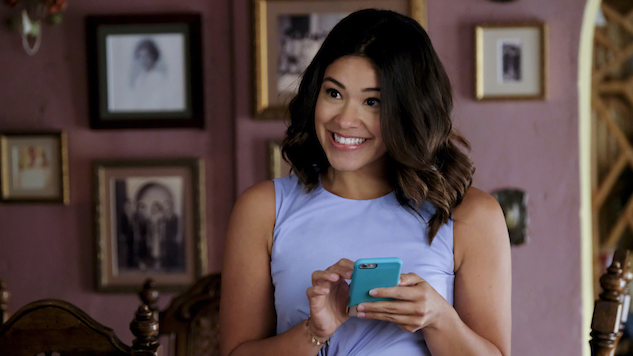
With respect to, well, all other television, there are few shows that are as wildly, earnestly, joyfully ambitious as Jennie Snyder Urman’s Jane the Virgin. It’s bilingual! It has a Latin Lover narrator (the glorious Anthony Mendez)! It features highly stylized and costumed daydreams! It uses metatextual elements to tackle social justice issues AND celebrity shenanigans! It began, back in 2014, with the off-the-rails premise of the very Catholic, very career-focused Jane (Gina Rodriguez) getting accidentally artificially inseminated by the unstable OBGYN sister (Yara Martinez) of the man (Justin Baldoni) whose “sample” was used and who is also, incidentally, both Jane’s boss and old almost-flame… and then opened into Act Two. Three and half seasons later, the series has not only lost none of its joy and ambition, but has gained complexity and richness as its antagonists—particularly Petra/Anezhka (Yael Grobglas), but recently also Rogelio’s (Jaime Camil) nemeses Darci (Justina Machado) and Esteban (Keller Wortham)—have been given more layers to work with, and as Jane’s romantic and familial entanglements have, both leading up to and following (SPOILER) the affectingly mundane midseason death earlier this year of her husband, Michael (Brett Dier), been allowed to mature with grace, humor, and realism. Here’s to another three and a half great seasons. —Alexis Gunderson (Photo: The CW)
6. Dawson’s Creek
Network: The WB
Original Run: 1998-2003
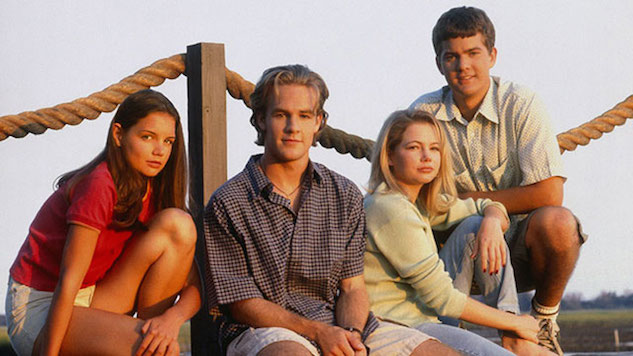
From the moment in the pilot when Pacey (Joshua Jackson) told his teacher “I’m the best sex you’ll never have,” we knew Dawson’s Creek would be different. Originally centered on four teens Dawson (James Van der Beek), Pacey, Joey (Katie Holmes) and Jen (Michelle Williams), the series took teen love triangles to a whole new level. These eloquent teens probably didn’t talk like any adolescents you knew but the angst they brought to their everyday lives was palpably relatable. The show was groundbreaking. Season Two introduced Jack (Kerr Smith), the first gay teen who was a series regular not just a very special episode. The show became even more groundbreaking when Jack and his boyfriend shared an onscreen kiss at the end of Season Three. (Credit creator Kevin Williamson and executive producer Greg Berlanti for handling Jack’s storyline so authentically.) To this day, talk of Team Dawson or Team Pacey will elicit passionate, well thought out responses. As for me, I’m #TeamPacey forever. He remains the best sex I never had. —Amy Amatangelo (Photo: Warner Bros.)
5. Everybody Hates Chris
Networks: UPN, The CW
Original Run: 2005-2009

Chris Rock is one of the funniest comedians of all time. This is far from a controversial stance. Upon developing a period sitcom about his Brooklyn childhood for the (now defunct) UPN back in the mid-2000s, however, the question emerged of whether or not his brand of knowing, acerbic comedy could survive the transition to network TV. The answer proved to be both yes and no. From the opening seconds of its pilot, Everybody Hates Chris positions itself as an incisive, utterly confident comedic tour-de-force that is perfectly in line with Rock’s brand. And yet, in the hands of co-creator/showrunner Ali LeRoi, the show aimed to be much more than simply the comedian’s stage work reformatted into TV storylines. The result was a family sitcom that both harkened back to the Norman Lear comedies of old, while still retaining the rapid pace and tight construction of the best single-camera productions. The show was never more successful, however, than when it came to its casting, with Tyler James Williams demonstrating immense charisma and comic timing as a young Chris; meanwhile, Terry Crews and Tichina Arnold would promptly enter the pantheon of great TV couples as Chris’ larger-than-life parental units. And though low ratings and frequent schedule shifts would ultimately snuff the series out after four seasons, it quickly sketched its place as one of the greatest sitcoms of the aughties, and living proof of why we can’t have nice things. —Mark Rozeman (Photo: CBS Television Distribution)
4. Crazy Ex-Girlfriend
Network: The CW
Original Run: 2015-present
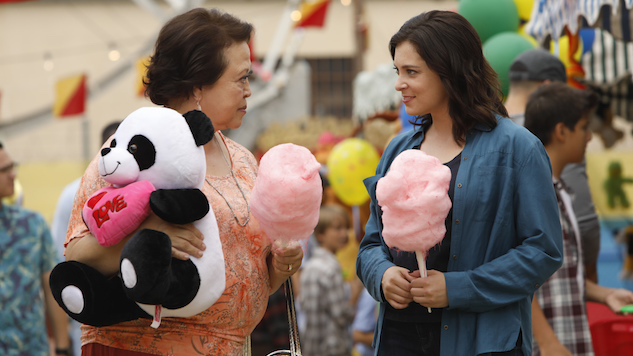
After its Season Two finale, which left lead Rebecca Bunch (Rachel Bloom) jilted at the altar, it would have been easy to assume this musical comedy would become a singing and dancing revenge fantasy. Instead, the third season of the CW series, which Bloom co-created with Aline Brosh McKenna, has gone on to tackle something much more important than boy problems: mental health. It was recently revealed that Rebecca has borderline personality disorder, and a healthy support group of friends who will help her cope with her new diagnosis. But don’t worry. The show still has time for songs about poop jokes and nostalgia for the first penis a woman ever saw. —Whitney Friedlander (Photo: The CW)
3. Gilmore Girls
Network: The WB, The CW
Original Run: 2000-2007
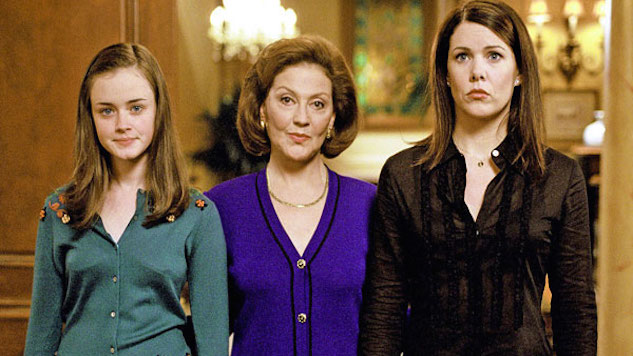
Gilmore Girls has become such a part of our pop-culture landscape that it’s hard to remember a time when we didn’t have the fast-talking Lorelai Gilmore (Lauren Graham), her daughter Rory (Alexis Bledel) and her parents Emily and Richard (Kelly Bishop and the late Edward Hermann) in our lives. A brilliant family comedy with a feminist spin, Gilmore Girls transformed the WB. People might have been able to dismiss the wonderful Buffy the Vampire Slayer but they couldn’t ignore our Girls. In Stars Hollow, executive producer Amy Sherman-Palladino created a quaint town that could only exist on TV yet we all still wanted to live there. Inside this very entertaining show was a celebration of a high school girl who studies hard and has ambition. It was the rare shows that had something for you, your own daughter and your own mother. Emily was a fully realized character not a grandmother who simply popped in with a quip one-liner. Generational differences were explored. The series was also a remarkable launching pad. Bledel went on to star in The Handmaid’s Tale. Milo Ventimigila who played Rory’s bad boy boyfriend Jess currently makes us cry on This is Us and Melissa McCarthy, who played Lorelai’s best friend Sookie, has the career the town of Stars Hollow would throw a parade about. —Amy Amatangelo (Photo: Warner Bros.)
2. Veronica Mars
Networks: UPN, The CW
Original Run: 2004-2007
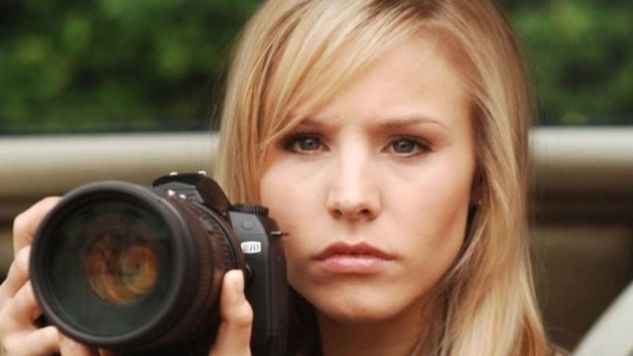
Equal parts witty and riveting, Veronica Mars followed the title character, an ostracized high-school student who moonlights as a private eye for her classmates. Kristen Bell uncannily portrays someone who is simultaneously smart, vulnerable, tough and injured. The series, which received a fan-funded movie revival in 2014, is thematically compelling, stylistically coherent and fully realized TV show. The first season followed Veronica as she solved the murder of her best friend Lilly (Amanda Seyfried) and uncover who assaulted her at a party. The eventual reveal of the murderer was shocking but the show proved it was much more than a one-trick pony. Subsequent seasons introduced new mysteries and corruption all while delivering some of the most fantastic dialogue on television (“Love stinks. You can dress it up in sequins and shoulder pads, but one way or another, you’re just gonna end up alone at the spring dance strapped in uncomfortable underwear.”) For UPN, the series represented a foray into critically acclaimed television. The show was then and remains one of the best TV series of all time. And marshmallows, we pause here to give a special shout out to Jason Dohring, who brought a nuanced combination of cockiness and hurt to bad boy Logan Echolls. —James South and Shaina Pearlman (Photo: Warner Bros.)
1. Buffy the Vampire Slayer
Networks: The WB, UPN
Original Run: 1997-2003
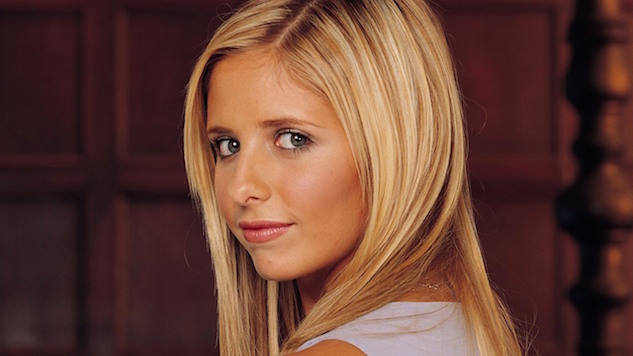
It all started as a simple idea in the mind of a harried story editor on Roseanne. What if you followed a beautiful blonde woman down a dark alley where she is attacked by a monster? Instead of screaming helplessly as she is being overtaken, however, the blonde girl turns around and beats the monster to a pulp. Creator/showrunner Joss Whedon’s feminist subversion of this horror trope has since spawned a vast universe of TV shows and comic books as well as more Internet fan fiction than one could possibly hope to consume in a lifetime. There’s a reason why. In an episode of The Simpsons wherein Lisa decides to join a Wicca group, she discovers the most popular topic is “Buffy the Vampire Slayer—Greatest TV Show Ever.” Indeed, more than being a pop culture powerhouse, Buffy was a pivotal program not only in the development of horror on TV but in bringing out genre storytelling from the fringes and elevating the “high school drama” to an art form. One only needs to look at the murderers’ row on display in the writers’ room (Marti Noxon, Drew Goddard, Douglas Petrie, David Fury, Jane Espenson, Steven S. DeKnight) to recognize the extravagant brain trust that went into constructing the show. Not that Buffy had a promising start by any means. The first iteration of Whedon’s ass-kicking, vampire-slaying Valley Girl was transformed beyond recognition into a campy 1992 feature film starring Kristy Swanson. Given a rare second chance when an executive at the WB approached him about redeveloping his concept for television, Whedon not only restored his original vision but employed the television format to dig even deeper. Using the monster-of-the-week premise, Whedon and his writers effectively Trojan Horsed deeper narratives involving puberty, sex, bullying, grief, redemption and, in the end, female empowerment. Just as Buffy (Sarah Michelle Gellar) the person saved the world a lot, Buffy the series saved its audiences from the doldrums of their daily lives. —Mark Rozeman (Photo: Warner Bros.)







































